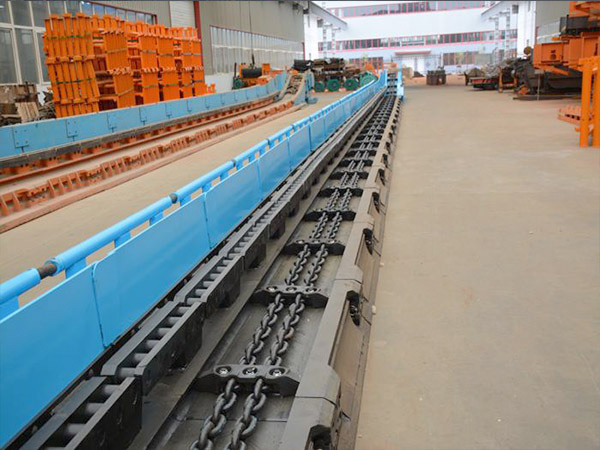-
All
-
bag Dust Collector
-
Electrostatic Precipitator
-
Cartridge Dust Collector
-
Desulfurization And Denitrification Equipment
-
Dust Collector Bag
-
Dust Collector Skeleton
-
Electromagnetic Pulse Valve
-
Rotary Valve
-
Screw Conveyor
-
Dust Conditioner
-
Plug Valve/Butterfly Valve
-
Scraper Conveyor
-
Catalytic Oxidizer
-
Cyclone Dust Collector
-
Sintered Plate Dust Collector
-
Spray Tower
-
Activated Carbon Adsorber
-
Light Oxygen Purifier
-
Dry Filter Box
-
Bucket Elevator

Scraper Conveyor
Scraper conveyor is an industrial equipment that relies on scraper chain traction to achieve continuous transportation of dust and granular materials in closed or open tanks....
Scraper conveyor is an industrial equipment that relies on scraper chain traction to achieve continuous transportation of dust and granular materials in closed or open tanks. Its core advantages are stable conveying capacity, wide adaptability to materials, and long-distance transportation. It is widely used in industries such as power, coal, building materials, chemical, metallurgical, etc. It is often matched with pulse bag filter, warehouse top dust collector and other equipment to collect dust discharged from the dust removal system or scattered materials in the production process. It can transport materials with a bulk density of 0.5-2.5t/m ³ and a particle size of ≤ 300mm, with a conveying capacity of 10-1000m ³/h and a conveying distance ranging from several meters to hundreds of meters. It is a key link in material transportation in industrial production.
From the perspective of structural design, the core of the equipment consists of five parts: the driving device, scraper chain components, conveying tank body, tensioning device, and unloading device. The overall design is optimized around "stable conveying and reducing material residue". The driving device is the power core, consisting of a motor, a reducer, and a coupling. Different power motors (usually 0.75-160kW) are selected according to the conveying capacity and distance. The reducer adopts a hard tooth surface design to confirm stable power transmission and long service life; The scraper chain component is a conveying execution part, and the scraper is mostly made of steel plate stamping (thickness 3-10mm). It is divided into straight plate type, T type, and U type according to material characteristics. The chain uses high-strength circular ring chain or plate chain, and the scraper and chain are rigidly connected by bolts to form a continuous conveying "scraper belt", which can effectively avoid material slipping or falling during the conveying process; The conveying tank is a material carrying component, which is divided into open type (suitable for dust-free pollution and easy heat dissipation scenarios) and closed type (suitable for dusty materials, stable performance materials, and can prevent dust overflow) according to working conditions. The tank material is Q235 carbon steel or 304 stainless steel, with smooth inner walls to reduce material residue and scraper wear; The tensioning device is used to adjust the tightness of the chain, avoiding chain looseness that may cause chain jumping or scraper deviation. There are two common types: spiral tensioning and heavy hammer tensioning. Heavy hammer tensioning can automatically compensate for chain wear and elongation, and is suitable for long-distance conveying scenarios; The unloading device is set in the middle or end of the tank according to the demand. The end unloading is the default form, and the middle unloading can be achieved through an electric unloading valve to meet the material distribution needs of multiple stations.
Its working principle is based on the collaborative mechanism of "scraper traction+groove carrying", with a simple and continuous process: after starting the driving device, the motor drives the active sprocket to rotate through the reducer, and the active sprocket drives the scraper chain to circulate in the conveying groove; When the material is fed into the tank from the inlet, it is pushed by the scraper along the bottom of the tank towards the discharge end as the scraper chain moves; When reaching the discharge port, the material is discharged from the tank outlet under the action of gravity and scraper thrust, and enters the subsequent equipment (such as material bin, crusher or another conveyor) to complete the entire conveying process. If it is a closed tank, an inspection port can also be set at the top of the tank to facilitate daily inspection and cleaning of residual materials in the tank.







